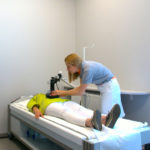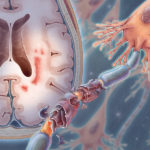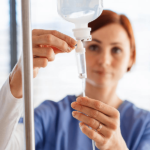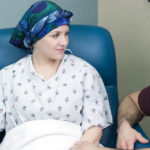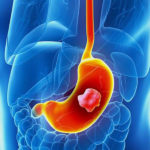 Wróć do poprzedniej strony
Wróć do poprzedniej strony
Rheumatoid arthritis (RA): causes, symptoms and treatment
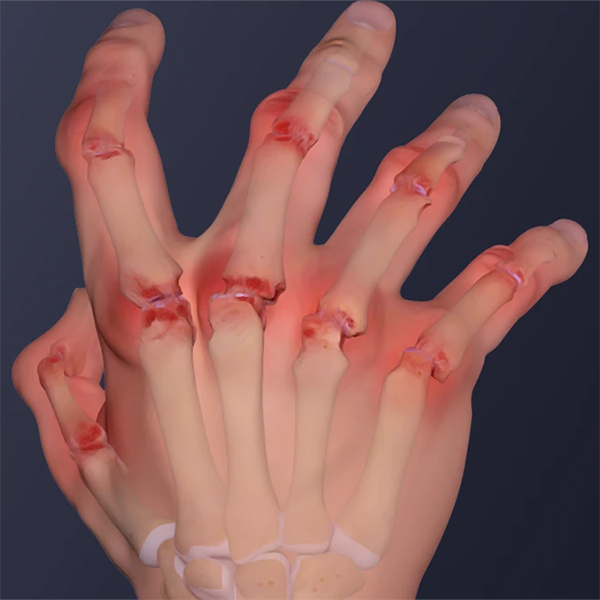
Rheumatoid arthritis (RA), sometimes incorrectly referred to as „rheumatologic arthritis,” is the most common inflammatory joint disease, usually beginning in young and middle age. If left untreated, it can lead to joint damage and other complications. But current treatments and therapies typically allow most patients to remain mobile and functional.
What is rheumatoid arthritis
Rheumatoid arthritis (RA, rheumatoid arthritis, former name: chronic progressive rheumatoid arthritis) is a chronic inflammatory disease affecting joints and various organs. Its most characteristic symptom is pain, stiffness, and swelling in the joints of the hands and feet, but inflammation can also affect other joints. Untreated, the disease usually leads to joint destruction and severe disability, as well as damage to many organs and premature death. Early application of effective treatment slows the progression of the disease, prevents its complications, and allows normal functioning.
Rheumatoid arthritis - causes
The essence of the disease is an inflammatory process that begins inside the joint. An unknown factor stimulates the joint’s synovial membrane to an inflammatory response. Inflammation leads to its enlargement and destruction of adjacent structures (cartilage, bones, ligaments, tendons), which initially manifests with pain in these areas and swelling, followed by irreversible destruction and loss of joint mobility. Damage to the cartilage and other structures of the joint by the inflammatory process promotes the formation of secondary degenerative changes.
The causes of RA still need to be fully understood. Most likely, several factors need to coexist for the disease to develop. The most important of these are:
- Hereditary burden – there is a predisposition to RA in closely related people. Genetic factor alone does not cause the disease – so the presence of RA in a parent does not mean that the disease will occur in children, but the risk of its occurrence is 2-5 times higher in them.
- Defect in the immune system – leads to the misrecognition of one’s tissues as the „enemy” and the production of autoantibodies aimed at destroying them; several genes responsible for this process have been identified (including the HLA DRB1 tissue compatibility genes)
- Gender – women get the disease about three times more often than men.
- Infection – the role of certain bacteria and viruses in initiating the inflammatory response is suspected
- Cigarette smoking – increases the risk of getting the disease and causes it to be more severe.
- Stress – in some patients, the disease begins after experiencing severe stress.
Rheumatoid arthritis - symptoms
In most patients, RA develops insidiously. It can take several weeks or even months before the discomfort becomes troublesome enough to prompt seeking medical attention. Less often, there is a sudden development of the disease within a few days or so. In the beginning, there are often „general” flu-like symptoms, such as weakness, a sub-febrile state, muscle pain, loss of appetite, and weight loss. These may precede or accompany „joint” symptoms. In the course of the disease, symptoms of involvement of other organs may also occur.
Characteristic symptoms of RA
Joints
The disease typically attacks the same areas on both sides of the body. These are the small joints of the hands and feet, and many other joints are affected as the disease progresses. An atypical (but possible) onset of the disease is inflammation of one primary joint (such as the knee or shoulder), or the disease wanders over many joints.
Symptoms of arthritis include:
- Pain and stiffness – most bothersome after waking up or after a period of not moving the joint, when there is an accumulation of inflammatory fluid and swelling of the tissues; morning stiffness is characteristic, which usually lasts more than an hour in RA.
- Edema – is the result of the proliferation of the synovial membrane forming the so-called scaly tissue; it may be accompanied by exudation due to the overproduction of inflammatory joint fluid.
- Tenderness of the joint to pressure – painful shaking of the hand when shaking hands with an RA patient is characteristic, for example.
- Restriction of mobility – the affected joint loses the ability to perform a full range of motion. If there is damage to the structures of the joint as a result of inflammation and secondary degenerative changes, the impairment of joint function becomes irreversible.
- Joint deformity – is a consequence of the permanent disease; (Fig. typical joint deformities in RA).
Extra-articular lesions
Rheumatoid arthritis is a systemic disease affecting the joints and many organs (especially the long-term, severe form). In addition to relatively common benign lesions, such as rheumatoid nodules or dry syndrome, severe complications leading to premature death (such as stroke or heart attack) can rarely occur.
- Rheumatoid nodules – painless subcutaneous nodules, most often located around the elbows, joints of the hands, and other areas exposed to pressure; they can also form in internal organs.
- Atherosclerosis, with its accelerated development, results from the activation of inflammatory processes. Complications of atherosclerosis are the leading cause of premature death in people with RA; in these patients, the risk of myocardial infarction and heart failure, sudden cardiac death, or stroke is 2-3 times higher than in healthy people (What is Atherosclerosis, Coronary Artery Disease, Myocardial Infarction).
- Heart – in addition to ischemic heart disease and myocardial infarction resulting from the development of atherosclerosis, the following can occur: pericarditis, cardiomyopathy, and damage to heart valves – symptoms of these diseases include chest pain, shortness of breath, and reduced exercise tolerance.
- Vasculitis – vasculitis is a rare but severe complication of RA, leading to ischemia of various internal organs; fingertip and skin ulceration may also occur.
- Lungs – RA promotes pleuritis and interstitial pneumonia, among other conditions; these diseases cause dry cough, shortness of breath, and chest pain.
- Osteoporosis – both RA and the glucocorticosteroids (GCS) used in its treatment significantly accelerate osteoporosis development; starting treatment early enough to reduce the risk of bone fractures is vital.
- Eyes – a common symptom is a dry syndrome caused by conjunctivitis, for which a feeling of sand or a foreign body under the eyelids is characteristic; less often, there is the involvement of other structures of the eye and problems with vision.
- Nerves – the so-called carpal tunnel syndrome associated with compression of the median nerve by altered joint structures at the wrist level is expected. A rare but dangerous complication is spinal cord compression caused by a vertebral subluxation in the cervical spine – its symptoms include headache, sensory disturbances (numbness, tingling, impaired pain sensation), and weakness or paresis of the limbs. This condition requires urgent medical attention.
- Kidney – both the disease and the drugs used can damage the kidneys; regular check-ups of kidney function are essential.
- Hematologic disorders – moderate anemia (anemia) and an abnormal white blood cell count- are common in the long-term disease. For exacerbations of the disease, an increased platelet count is characteristic. Lymph node and spleen enlargement are more common. RA increases susceptibility to infections and the risk of developing lymphomas.
Rheumatoid arthritis - diagnosis
A doctor diagnoses rheumatoid arthritis based on the coexistence of characteristic symptoms with laboratory and imaging findings. In 2010, new classification criteria for RA (ACR/EULAR) were developed, diagnosing RA at the initial stage of the disease and beginning treatment before irreversible joint destruction occurs. Previously used RA criteria dated back to 1987 and were only met in developed disease (meaning that a specific diagnosis could only be established after a longer follow-up).
Laboratory tests
Laboratory tests diagnose RA, predict disease severity, and control its course.
- RF (rheumatoid factor) is found in 70-80% of patients (the so-called seropositive form of RA); however, RF is also detected in healthy individuals and other rheumatic diseases.
- Anti-CCP/ACPA (antibodies to cyclic citrullinated peptide) – their advantage is that they are more specific for RA; they may appear earlier than disease symptoms and in people with the seronegative form of RA.
- High RF and anti-CCP titers indicate a severe form of the disease, with rapid joint destruction and extra-articular lesions.
- Elevated inflammatory markers, e.g., ESR, CRP, and blood count changes, are used to assess disease activity.
TThe doctor may also perform other blood, urine, or joint fluid tests to rule out other joint diseases and assess the functioning of various internal organs (e.g., kidneys, liver).
Imaging tests
If RA is suspected, radiographs (X-rays) of the hands and feet and possibly other involved joints are taken. Typical radiological changes in RA include soft tissue swelling and decreased bone density in the joint area, the presence of bone defects (erosions), narrowing of joint crevices, and, at a later stage, joint deformity.
MRI and ultrasound are applicable at the beginning of the disease, as they can show inflammatory changes earlier than X-ray. In some cases (such as the evaluation of the cervical spine), CT scans are helpful.
Rheumatoid arthritis - treatment
RA treatment methods have changed significantly in recent years due to the emergence of new effective drugs. The current emphasis is on using a disease-modifying medicine (LMPCh) as soon as possible. Increasingly, this allows the patient to achieve remission (i.e., a state in which there are no symptoms of the disease or features of disease activity on laboratory and imaging studies) or low disease activity. Unfortunately, the onset of RA is often insidious, and it is not uncommon for it to take several months until appropriate treatment is implemented – so don’t delay going to the doctor if you experience arthritis symptoms!
Successful treatment of RA means a resolution of the disease’s symptoms, good quality of life, and preservation of function. In addition to the primary drug treatment in this disease, early initiation of rehabilitation and, in some cases, surgical treatment is essential. The rheumatologist decides the exact medications to be used after considering the severity of the disease, its activity (usually using the DAS 28 index), prognostic indicators, and contraindications to certain medications (e.g., liver disease, kidney disease, chronic infections, tuberculosis). It is essential to develop an effective management plan with the doctor – this involves regular visits and laboratory tests to assess the drugs’ effectiveness and possible side effects.
Pharmacological treatment
Disease-modifying drugs (DMEs) play a fundamental role in treating RA, as they alleviate symptoms and, most importantly, inhibit joint destruction, allowing patients to maintain mobility and function, usually in daily life. DMEs should be used as early as possible after the diagnosis is established to prevent the development of irreversible joint changes. However, these drugs do not provide a complete cure – the disease usually recurs after they are discontinued. A distinction is made between „conventional synthetic” (ksLMPChs), „targeted styptic” (csLMPChs), and „biologic” (bLMPChs) LMPChs. The ksLMPChs that constitute first-line treatment include:
- methotrexate
- leflunomide
- sulfasalazine
- chloroquine/hydroxychloroquine
- gold compounds (not currently used).
The initial effect of these drugs appears after some time, usually after 1-2 months (full effect after 3-6 months). Methotrexate is the first choice drug in RA. It has high efficacy and is generally well tolerated (many side effects are transient).
For several years, the treatment of RA has increasingly involved using so-called biological drugs obtained by genetic engineering techniques, which target factors involved in the inflammatory process. Several natural medications depend on their target site of action (including TNF, Il-6, T, or B lymphocytes). These drugs are administered parenterally, most often subcutaneously, and less often intravenously.
In the treatment of RA, the most commonly used are:
- adalimumab
- etanercept
- infliximab
- certolizumab
- golimumab
- abatacept
- tocilizumab
- rituximab.
Recently, innovative therapies for RA have also included targeted synthetic LMPChs that inhibit inflammatory pathways through so-called Janus kinases (tofacitinib, baricitinib, upadacitinib), which have the advantage of oral administration.
The effect of the innovative drugs is noticeable faster, usually within 2-6 weeks. They are often given in combination with synthetic drugs (mainly methotrexate), which prolongs their effectiveness. Biologic drugs are reserved for patients who fail to achieve adequate disease control despite maximum tolerated doses of synthetic drugs and less often as initial treatment for those with high disease activity and poor prognosis factors.
Glucocorticosteroids (ICS) rapidly reduce arthritis symptoms and inhibit arthritis destruction, which is why they are often used at the beginning of the disease (before the primary ICS takes effect) and in its exacerbations. Due to the many side effects, one should reduce the dose of ICS as soon as possible and use them for the shortest time. GCSs can also be administered directly into the affected joint (see Prednisolone, Methylprednisolone).
Non-steroidal anti-inflammatory drugs (NSAIDs) – reduce the symptoms of arthritis but do not stop the progression of the disease, which is why they are used only as supportive medications for joint pain and stiffness. They exhibit many side effects, such as gastrointestinal bleeding, kidney damage, and an increased risk of heart disease. Never take more than one drug from this group, and do not exceed the recommended dosage.
See selected drugs in this group: diclofenac, ibuprofen, ketoprofen, naproxen, nimesulide, celecoxib, etoricoxib.
Analgesics, such as paracetamol and opioids, are used if pain persists despite complete primary treatment.
Non-pharmacological treatment
For all patients, in addition to the use of medication, very important:
- Mental support – remember that the disease, often associated with pain and disability, can cause frustration, dependence on others, and even depression. Do not hesitate to seek mental support from loved ones and specialized counseling centers; some methods (such as biofeedback and behavioral therapy) are very effective in controlling the symptoms of the disease and improving self-esteem.
- Rest – fatigue is a common symptom of RA, especially during its active period; allow yourself to rest – short naps during the day will help you regain energy and relieve your diseased joints.
- Exercise – RA patients often forgo any physical activity, which leads to reduced joint mobility, contractures, and weakened muscle strength; regular physical activity prevents and even reverses some of the adverse changes in the joints; exercises that increase range of motion and strengthen muscles are advisable (they will help maintain joint mobility and stability), as well as activities that improve overall fitness (e.g., walking, swimming, cycling); the exercise program should be developed by a physical therapist and tailored individually to each patient, depending on the severity of the disease, the person’s condition and co-morbidities
Important
It would help if you abstained from exercise during an exacerbation of disease symptoms; remember that the earlier you start targeted rehabilitation, the easier it will be to prevent joint deformity and disability.
- Physical therapy – various techniques, such as cryotherapy, ultrasound, massage, and balneotherapy, help reduce pain and inflammation in the joints and relax the muscular system. Their use requires careful evaluation of the condition and consideration of any contraindications.
- Orthopedic supplies help relieve pressure on the affected joints and cope with the disability – these include canes, crutches, walkers, and wheelchairs to help with mobility and stabilizers for the hands, knees, and ankle joints (known as orthoses). They help maintain proper joint positioning, and orthopedic shoe inserts to improve foot structure and relieve pressure on weight-bearing joints when walking.
- Adaptation of the environment to the disability, e.g., specially adapted kitchen appliances, furniture, handles to help with standing up, and an adapted car – will enable performing activities of daily living.
- Proper diet – it’s all about maintaining healthy body weight and avoiding both overweight and obesity (which increase the burden on joints and accelerate the development of atherosclerosis) and malnutrition (which weakens the body and leads to muscle atrophy). It’s also essential to provide your bones with enough calcium and vitamin D, as RA significantly accelerates the development of osteoporosis.
- Smoking cessation increases the risk of the disease and its severity.
Local treatment
Topical treatment of rheumatoid arthritis deals directly with the affected joint.
It is performed:
- Puncture of the joint to decompress it of accumulated inflammatory fluid and administration of anti-inflammatory drugs (ASCs) to the inside
- Synovectomy – the procedure of removal of the altered synovial membrane. There are various ways to perform them: surgical, chemical (by administering a substance that destroys the synovial membrane), or radioisotope.
- various types of corrective and reconstructive procedures aimed at improving the structure and function of deformed joints
- Endoprosthesis, which is the replacement of a damaged joint with a prosthesis
- Arthrodesis, which involves completely stiffening a joint, thereby eliminating pain
- Decompression of carpal tunnel syndrome. It often accompanies RA.
Contact information
55-010 Żerniki Wrocławskie
Working hours
Have a question?
Use the quick contact form!
Contact information
55-010 Żerniki Wrocławskie
